When Indian drinks are the topic of a conversation, many people often refer to tea as a staple drink of the country. That’s true because India is one of the biggest tea consumers worldwide. Besides, people also utilize some savory Indian fruits to create incredible beverages.
Therefore, it may be helpful for you to look into this article to expand your knowledge of the Indian refreshment category. Furthermore, you may even discover some rare Indian spirits that only appear in specific country regions.
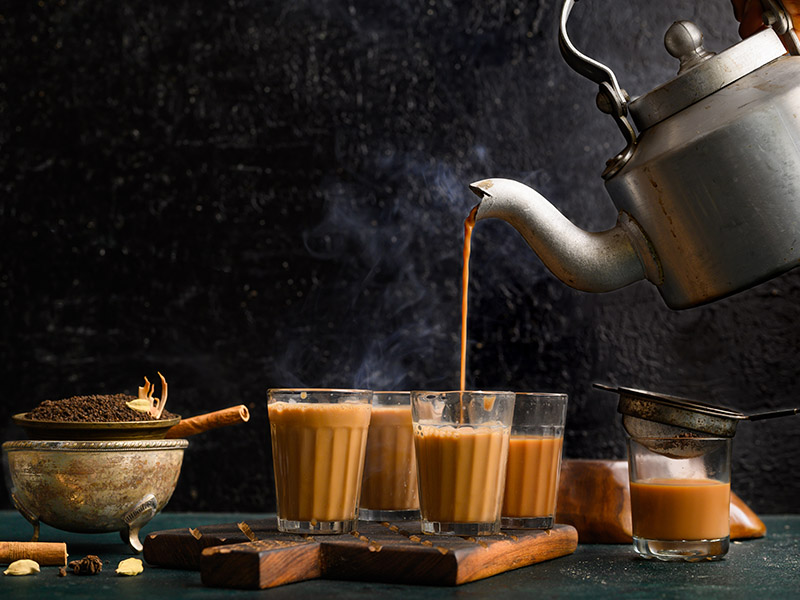
Non-Alcoholic Indian Drinks You’ve Got To Explore
India undoubtedly possesses vast options for non-alcoholic drinks. In addition, each beverage recipe can have different variations just from changing a simple ingredient. So let’s discover some of the essential Indian alcohol-free refreshments.
1. Namkeen Lassi (Salted Yogurt-Blended Drink)
Non-alcoholic
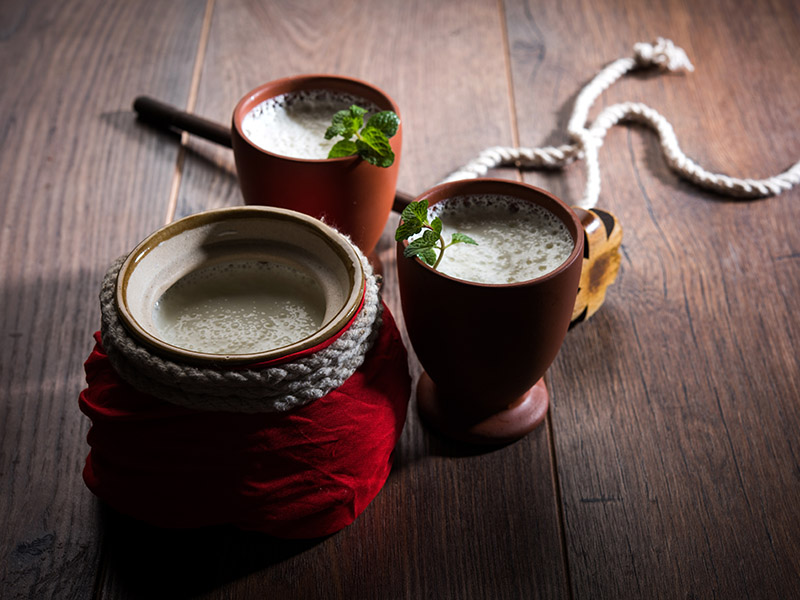
Lassi is a yogurt drink of Indian cuisine. The refreshment is a simple concept of combining water with yogurt, which locals usually have during the summer to beat the intense heat. Commonly, there are three types of lassi: salted (the most popular type), sweet, and Bhang.
Simply transfer the yogurt into a bowl with a pinch of salt and cumin powder for seasoning. Pour in the water and whisk until you get a frothy texture. Allow the Namkeen Lassi to cool down in the refrigerator before enjoying your yogurt creation.
As a small tip, roasting the cumin powder helps enhance the overall flavor of the drink. Typically, cumin provides a hint of lemon peel flavor when combined with yogurt.
Where To Find: At local stores and vendors in India.
If you love simple creamy drinks, you must try Namkeen Lassi at home.
2. Mango Lassi
Non-alcoholic
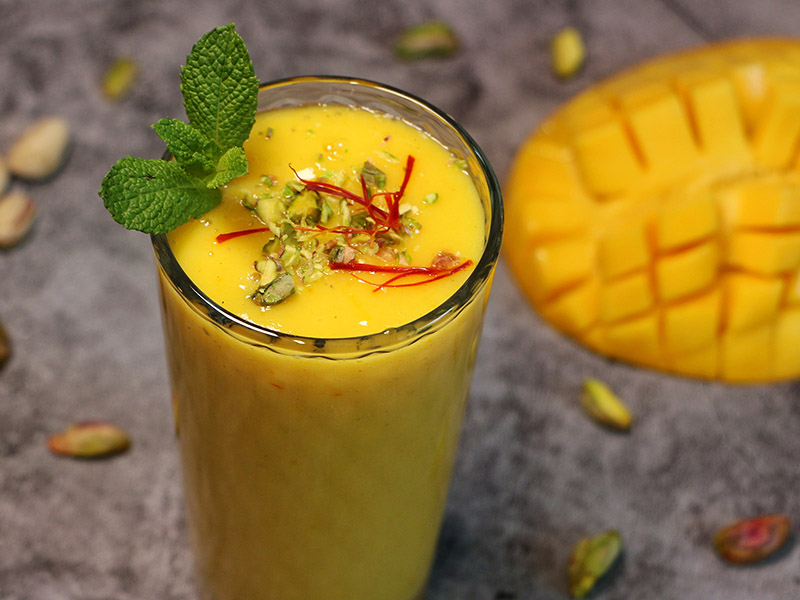
Mango Lassi is a variation of the Lassi yogurt-based drink. Thanks to the addition of mango, the refreshment gets a beautiful yellow color with a sweet taste. In addition, Mango Lassi still possesses the signature creaminess of conventional Lassi.
This recipe calls for a yogurt base with milk, cardamom, and sugar. Most often, people use yogurt or curd with cream for extra richness. Before dumping the ingredient into the blender, you want to create a mango puree first.
Blend the concoction for around 60 seconds and pour it into a glass for serving. Place a saffron strand on the glass for a simple decoration. If you want a thick Lassi, I recommend including the milk in the mixture.
Where To Find: At local vendors and stores in India.
3. Assam Tea
Non-alcoholic

Assam tea is a black tea named after the Assam region in Northeastern India, where people mainly produce it. Interestingly, this type of tea is only native to the Assam area. The tea can significantly reduce the risk of heart disease as well as boost your brain health.
Usually, you want to warm up the teapot with hot water before putting in the Assam tea leaves. Proceed to pour hot water over the leaves and steep for around 5 minutes to extract all the goodness. Strain the tea leaves, and you’re good to serve up the tea.
An alternative way of making Assam tea is to cold-brew it. Simply pour regular water into a pitcher with tea leaves and place the concoction in the refrigerator for 12 hours. Strain the leaves and enjoy your healthy Assam tea.
Where To Find: You can easily find dried Assam tea leaves from Indian tea stores.
4. Masala Chai (Indian Spiced Milk Tea)
Non-alcoholic
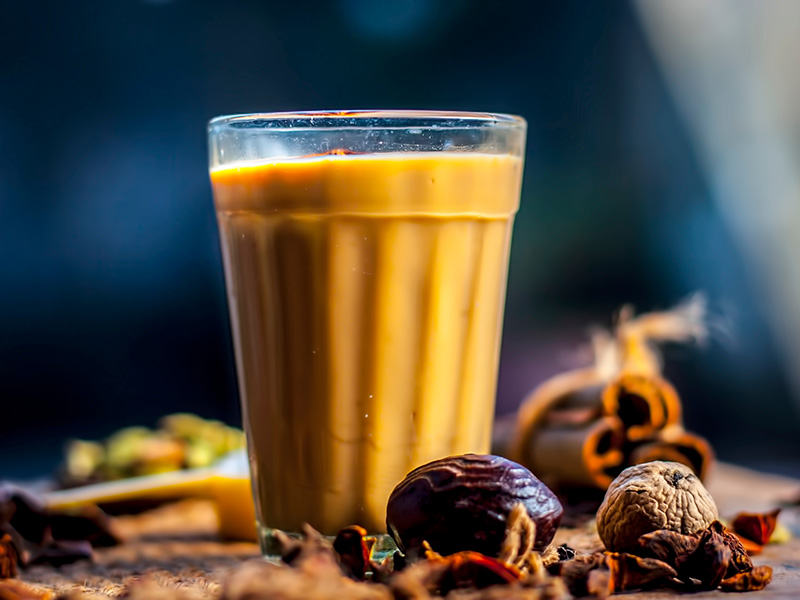
When it comes to the best Indian refreshments, you can’t leave out Masala Chai, an amazing take on the iconic flavor of teas. Locals serve the tea hot in small cups to enjoy at any time of the day. Each Indian household always has a unique spice mix to make Chai Masala.
Since the 1990s, people started to use the term chai latte or chai tea latte to refer to the tea having the appearance of milk in the mix. Aside from India, Masala Chai is a favorite choice of the Caribbean region, East Africa, and Asian countries.
Traditionally, people use a combination of cardamom, dry ginger, and clove to incorporate with black tea (usually the Assam variety). I always enjoy Masala Chai with slightly muddled ginger for an extra fragrance.
Furthermore, I suggest picking your favorite type of milk to infuse with the Masala Chai. This Indian milk tea usually possesses a strong flavor of astringent and spices.
Where To Find: Masala Chai appears across India at local stores, vendors, restaurants, and coffee houses.
Discover how to store Masala Chai in dried form for future consumption.
5. Paneer Soda (Rose Soda)
Non-alcoholic
Since the cuisines of Northern and Southern India are different, each region offers many unique delicacies. Originating in South India, Paneer soda is a sweet beverage with a light scent of rose. Many people often mistake the word Paneer for Indian cottage cheese. However, it also refers to rose water in Tamil, the official language of some Indian states.
The beverage starts with boiling water with sugar for around 4 minutes before adding rose essence. Let the rose syrup cool completely in the refrigerator. Whenever you intend to serve Paneer soda, pour the rose syrup into a glass with club soda and ice.
The drink resembles regular soda with the signature refreshing fizziness but with a twist of rose fragrance. It is particularly enjoyable and refreshing to drink in the sweltering summer.
Where To Find: At street food carts and vendors in India.
6. South Indian Coffee
Non-alcoholic
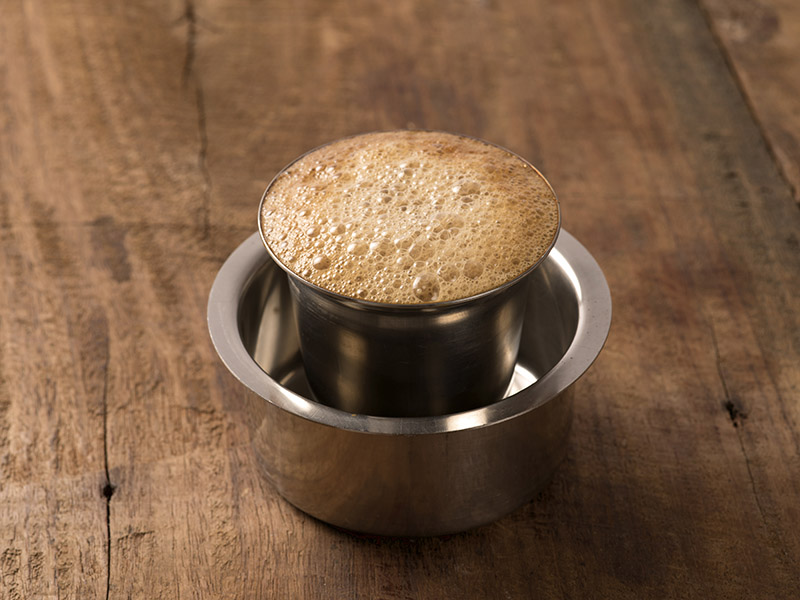
Coffee is another popular representative of South India; the drink usually appears on the breakfast menu of many Southern residents. People frequently pair coffee with bread or snacks. One of the most adored coffee in South India is the Chicory-infused variety.
The signature serving style of South Indian coffee uses a decoction to extract all the goodness. The coffee powder should gradually release its content with the hot water through every single drip. While you’re at it, whip up the milk concoction.
Ideally, you want to boil full-fat milk with a bit of sugar for the best result. Combine the hot milk with coffee for a warm morning drink. The South Indian coffee is usually stronger than conventional Western variation; not even Espresso can stand toe-to-toe with it.
Where To Find: At local stores or vendors.
7. Thandai (Saffron Flavored Milk)
Non-alcoholic
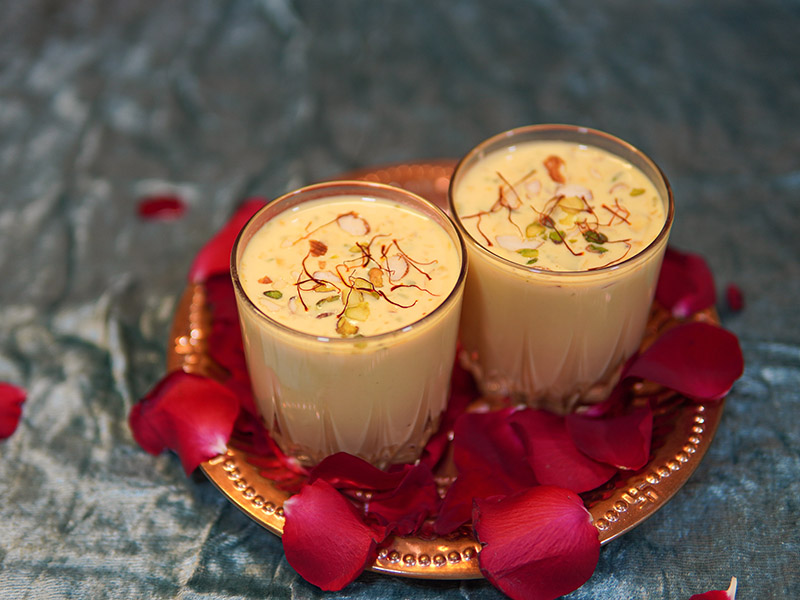
Aside from tea, India is also a big fan of saffrons. Thandai is a simple milk drink infused with spices, with many believing it has terrific health benefits. Indian locals tend to feature Thandai on Hindu holidays like Holi (Spring festival) and Shivratri (honoring Shiva god).
Commonly, locals soak the saffron in milk for around 10 minutes to extract its essence and color. In addition, people usually boil the milk with half and half (half milk and half cream beverage) and Thandai spices. Let the mixture cool for a bit, then add in rose water.
The Thandai spices are a combination of various nuts like almond, pistachio, and cashew. In addition, you want to incorporate cardamom, fennel, and poppy seeds into the mixture. Pound the dry ingredients thoroughly to create a fine powder.
Thandai often has a nutty flavor with a milky taste. Before serving, don’t forget to strain the drink to eliminate any unwanted sediments.
Where To Find: At local street food carts, vendors, and restaurants.
Learn the secret to fixing a special Thandai for this Holi festival.
8. Kashmiri Kahwa (Kashmiri Tea)
Non-alcoholic
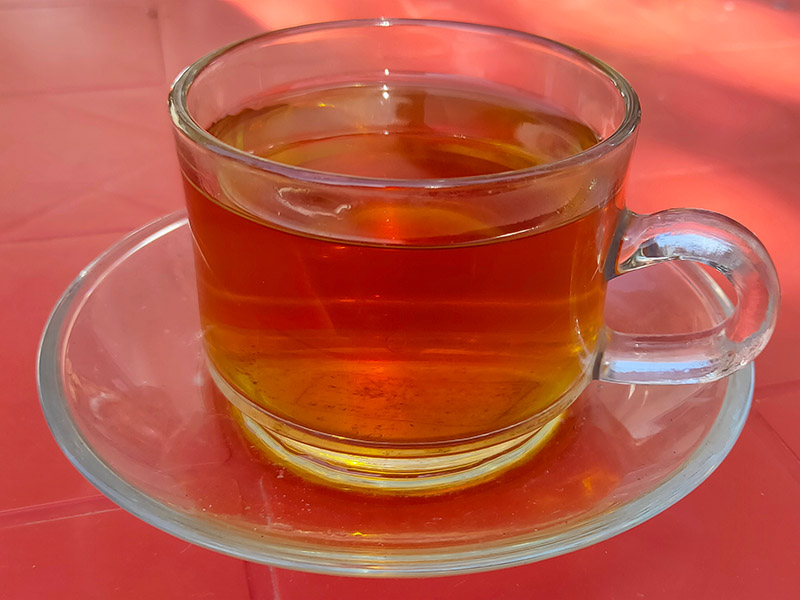
The Kashmiri Kahwa or Kehwa chai is a one-of-a-kind drink with an unclear root. The beverage has a light brown color similar to tea. Most often, Indians serve Kashmiri Kahwa in a brass kettle called samovar.
This tea mix has cardamom flavor with a blend of saffron, cloves, and cinnamon. Furthermore, you can add a dash of honey to improve the sweetness. The tea usually comes with dried almonds as a simple way of decoration.
Commonly, Kashmiri Kahwa possesses a transparent golden color from saffron and honey. The drink has multiple layers of flavors from spices.
Drinking Kashmiri Kahwa can significantly improve your digestive system. In addition, the tea even enhances your body’s immune system. Kashmiri Kahwa is also ideal for relieving stress in your daily life.
Where To Find: At cafe shops in India and the local stores of the Kashmir area.
9. Kokum Sharbat (Kokum Juice)
Non-alcoholic
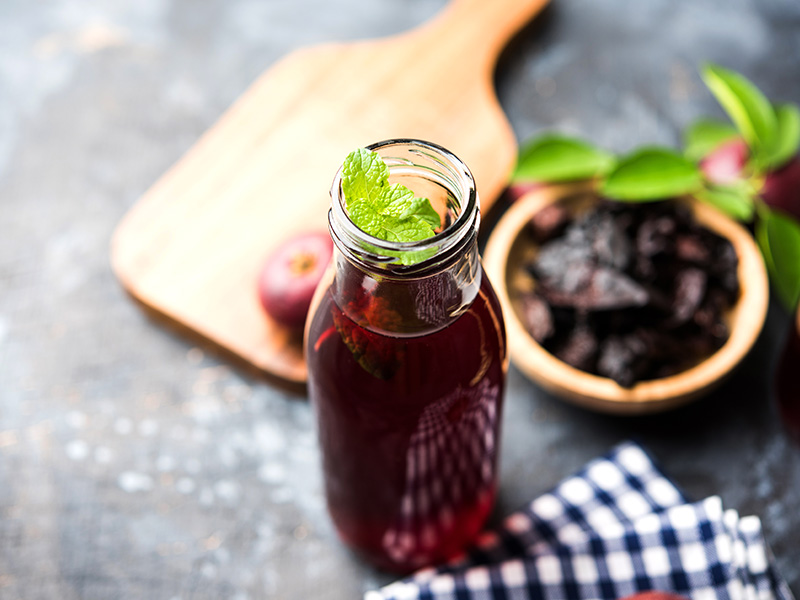
At first glance, you may think this purple-looking drink is pomegranate or blackberry juice. However, the beverage is made of Kokum (Garcinia Indica), a type of mangosteen-like fruit from the coastal region of India.
Locals combine semi-dried Kokum with sugar, cumin, and black salt. You need to blend the Kokum first before simmering it in water. Ideally, you should get a thick Kokum concentration for later use. Don’t forget to season the Kokum to your liking.
To turn the Kokum concentration into a drink, simply incorporate the mixture with water and enjoy. Kokum is naturally sweet and often has a note of acidic flavor.
Where To Find: At street food carts and vendors in India.
10. Shikanji/Nimbu Pani (Indian Lemonade)
Non-alcoholic
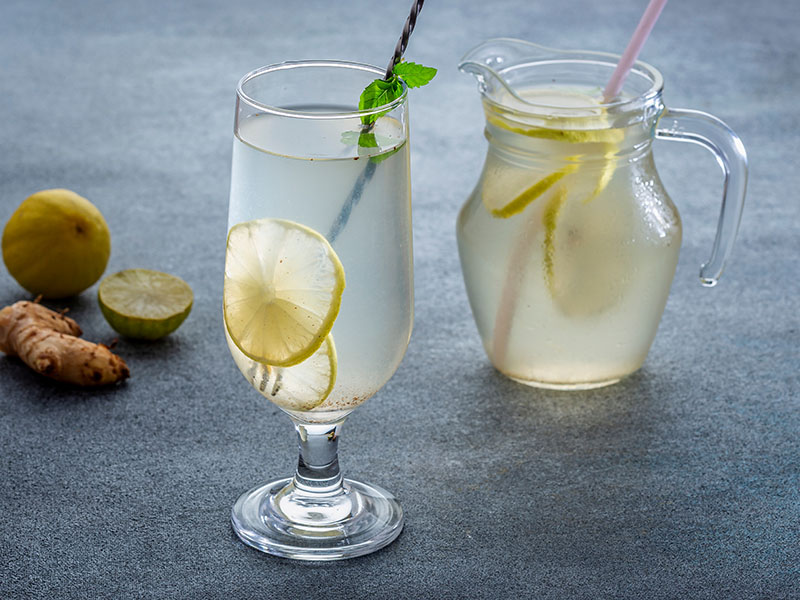
Anyone knows a cool glass of lemonade can turn your day into a refreshing one. Therefore, I want to introduce you to Shikhanji or Nimbu Pani (literally “lime water”), an Indian drink that tastes similar to lemonade. The added spices help create the uniqueness of this beverage.
Aside from the lemon juice, you want to include chaat Masala (Indian mixed spices), cumin, and black pepper. The concoction may sound weird, but the result is relatively mind-blowing.
Many people believe that drinking Nimbu Pani flushes out impurities from the body. One sure thing is that the drink provides a good source of vitamin C.
Where To Find: At local vendors and street food stores across India.
Uncover a fantastic twist to add to your Nimbu Pani recipe.
11. Sol Kadhi (Kokum Drink)
Non-alcoholic
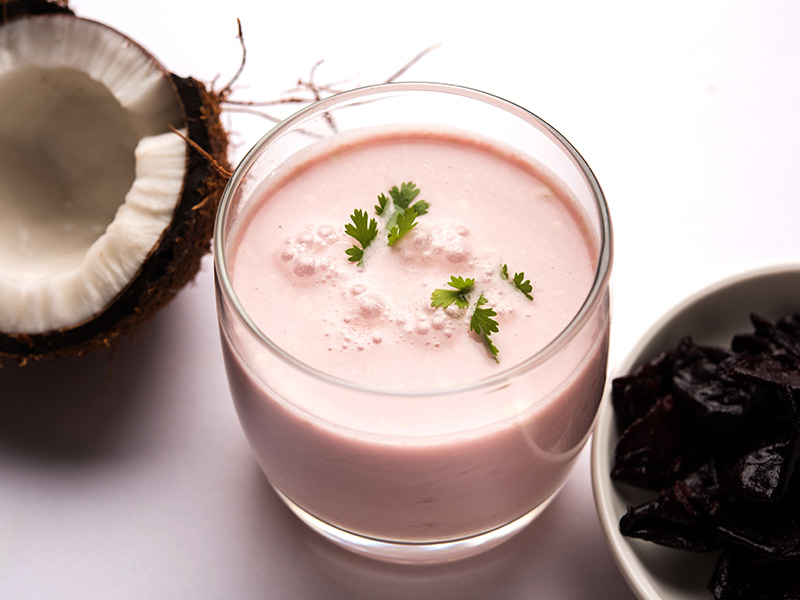
Sol Kadhi is a Kokum-based drink popular in the Maharashtra and Goa regions. In some cases, Indian residents even see Sol Kadhi as an ideal appetizer for every Indian meal. The beverage has a relatively thick consistency, similar to a smoothie.
A standard Sol Kadhi recipe calls for Kokum concentration. Therefore, you can use the method of making this mixture from the above recipe. In addition, you want to blend the coconut meat with green chili, clove, and garlic.
Proceed to strain and squeeze the coconut mixture to extract all the juice. Blend the coconut pulps and strain them once more to get the coconut milk. Finally, assemble the Sol Kadhi by combining the Kokum concentration and coconut milk.
Strain the concoction to remove any sediments. Season your Sol Kadhi with black salt, roasted cumin, and sugar for a final touch.
Where To Find: At Indian cafe shops, restaurants, or street food carts.
12. Haldi Doodh (Turmeric Milk)
Non-alcoholic
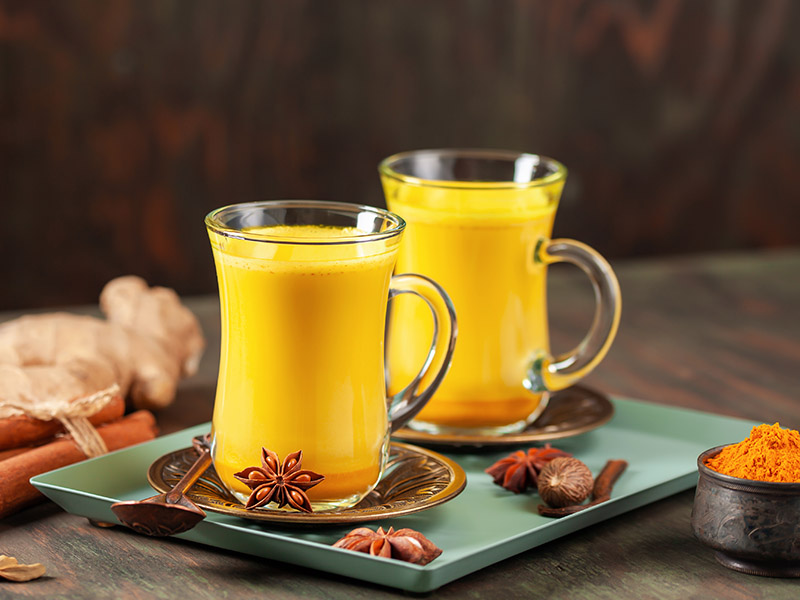
Haldi Doodh is traditional Indian milk infused with turmeric. People believe this beverage has a healing factor and provides many health benefits. Turmeric milk has a beautiful golden color that locals frequently use to treat colds, coughs, or inflammation.
However, if you suffer from gallbladder problems, diabetes, or bleeding disorders, then Haldi Doodh is not a drink for you.
To create the drink, you should simmer the milk in a pot until it is lightly boiling. Proceed to sprinkle in turmeric powder, cardamom, and black salt. In addition, you need to add some sugar to adjust the sweetness level.
Simmer the Haldi Doodh blend for around 5 minutes and strain the mixture for serving. The beverage is best to enjoy warm and usually possesses an earthy note. Furthermore, Haldi Doodh also has a slight note of citrus flavor.
Where To Find: At street food carts, vendors, and cafe shops in India.
Popular Alcoholic Choices Of Indian Locals You Need To Know
Although alcoholic drinks are not a staple in India for religious and cultural reasons, every area of the country still possesses unique spirits. Though each of these alcohol types may be difficult to find, it’s worth the effort as it represents the area’s culture.
13. Feni (Fermented Liquor)
Alcoholic
Feni is a traditional spirit of the Goa state in India. The regional residents usually make the alcohol from either cashew or coconut. Depending on the type of Feni, the final spirit may have different flavors but mainly has an aromatic scent.
Interestingly, the Feni is the juice from the second distillation process of cashew or coconut. The juice from the first distillation process is known as Urak. Goa’s residents usually pair Urak with some green chilies to enjoy.
The name Feni comes from the Sanskrit word Phena, meaning foam. It mainly refers to a layer of froth forming on the surface of the alcohol after shaking the Feni thoroughly for serving.
The most common way to consume Feni is to pour the liquid over ice or combine it with other ingredients for a cocktail. Sometimes, locals incorporate Feni with sugar syrup to smoothen the taste. An unique feature about Feni is that it doesn’t give you a hangover.
Where To Find: In Goa state of India.
Take a look at how Indians have kept this rare Feni liquor alive for over 800 years.
14. Chhang (Millet Finger Alcohol)
Alcoholic
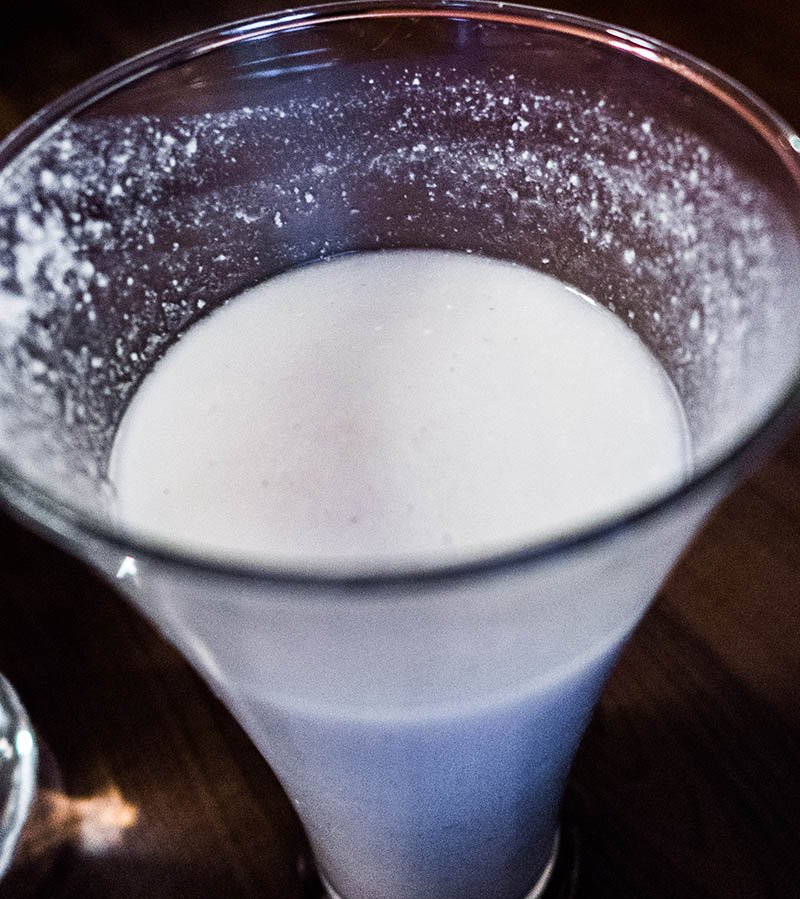
Chhang is perfect for warming up your body on cold days.
If you’re craving some refreshing beer in the middle of India, allow me to introduce Chhang, a rum-like spirit of the Himalayan. It’s usually a popular menu option in Nepal and Tibet, but some states of India also adopt this alcoholic beverage.
Aside from the Himalayas locals, the people of the Sikkim state also consume Chhang and use alcohol to offer to the gods. The beer utilizes the fermentation of millet finger as the vital ingredient.
Chhang is especially ideal for drinking from a warm wooden mug or brass bowl on cold days. Locals also enjoy Chhang at room temperature on hot summer days like regular beer.
Typically, Chhang is similar to ale and can warm up your body. The liquor is light whitish or orange with a sweet and sour taste.
Where To Find: At most restaurants in Ladakh, a northern region of India.
15. Toddy (Palm Alcohol)
Alcoholic

Toddy is a palm wine specialty of South India with an alcohol content of around 3% – 6%. The alcoholic beverage is the result of fermenting the palm sap. The collecting process is rather challenging, so you may want to leave it to the expert locals to handle.
Each region has a different name for this palm alcohol. With an alcohol content of about 8%, Toddy usually appears in the Southeast Asian area, South America, Africa, and the Caribbean. For example, it is an exotic drink in Malaysia, where it goes by the name Tuak.
Commonly, Toddy has a sour taste and a murky white color. The liquor tastes slightly bitter after fermenting for a couple of hours. Toddy may become a concoction similar to vinegar if fermented for too long.
To create Toddy using coconut water, you may want to include yeast to promote the fermentation process. Ensure you open the container once every 4 hours to reduce the CO2 pressure from the yeast activity. For serving, add some ginger, lemon, or mint to taste.
Where To Find: At Toddy liquor stores in the south of India.
If you’re still curious about Toddy, check out this introduction to the liquor.
16. Lugdi (Cereal Grain Alcohol)
Alcoholic
Lugdi is an exotic alcohol exclusive to the Himalayas region. The residents create the beverage mainly through the fermentation of cooked cereal grain. Lugdi usually appears in Himachal Pradesh, a northern state of India.
The drink is like a type of crude beer. Although locals often make Lugdi during summer, people only consume it in winter. In addition, Lugdi is a favorite liquor for festivals or wedding occasions. Unlike other types of Indian alcohol, Lugdi doesn’t require any distillation before consumption.
This cereal grain alcohol often has a murky white color after fermenting for around 12 – 20 days. It is ideal for warming up your body on cold days.
Where To Find: In Himachal Pradesh or the Himalayas region.
17. Mahua (Mahua Flower Alcohol)
Alcoholic
Mahua is the name of a naturally sweet flower native to the Odisha, Jharkhand, and Bengal regions. These vibrant red flowers have a natural cooling agent and astringent packed with many health benefits. Many tribes in India use Mahua as a remedy to treat many diseases.
When made into alcohol, Mahua has a nice flowery flavor and a crystal clear look. In addition, the alcohol is slightly sweet and pungent. Mahua alcohol often comes in glass bottles for preservation. In some regions, Mahua is a traditional serving for the Holi festival.
Where To Find: Mahua alcohol only exists in regions with abundant sources of Mahua flowers.
3 Indian Beverages To Materialize In Your Home
It’s exciting to look through various drink options from Indian cuisine. The country offers not only delicious Indian delicacies but also fascinating beverages to quench your thirst. Here are some drink recipes for whipping out at home whenever you want.
1. Namkeen Lassi
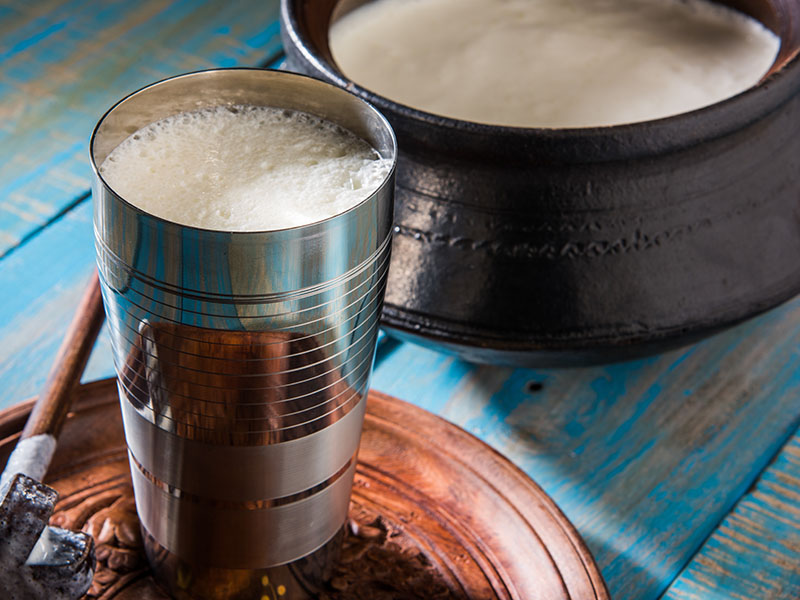
Summer is always the time for you to shine with a creamy refreshment to impress everyone. So make this Namkeen Lassi and let people know how talented you are at handling Indian cooking.
Ingredients: three cups of yogurt, one cup of water, one tablespoon of cumin, and one teaspoon of salt.
Step 1: Mix the yogurt in a bowl with cumin and salt.
Step 2: Gently add water to the bowl while whisking.
Step 3: Keep whisking until the mixture becomes frothy.
Step 4: Refrigerate for an hour before serving.
2. Nimbu Pani
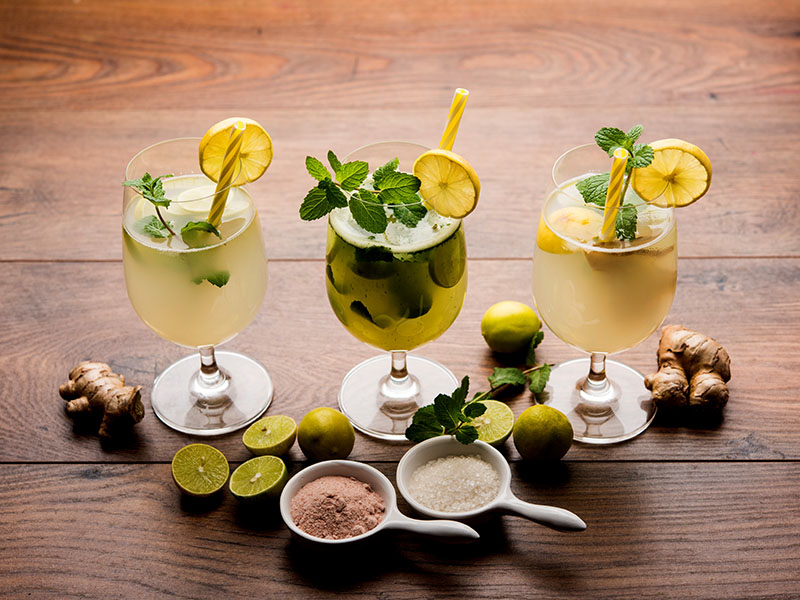
It’s time to freshen up yourself with a unique Indian lemonade recipe. Aside from being a reliable source of vitamin C, the beverage also helps cleanse your body from any impurities. So let’s see how you can recreate Nimbu Pani at home.
Ingredients: Juice of 1 lime, 2.5 cups of water, a pinch of salt, ground cumin, black pepper, and Indian chaat Masala, two tablespoons of sugar, ice cubes.
Step 1: Stir the lime juice with water and seasonings. Taste test the lime juice and adjust the flavor to your liking.
Step 2: Pour the mixture into your serving glass with ice.
Step 3: Garnish with mint leaves or a slice of lemon.
3. Paneer Soda
If conventional soda is not enough to satisfy your thirst, you must immediately test this Paneer soda recipe. The refreshment possesses an exotic rose flavor that rarely appears in other beverages.
Ingredients: four cups of club soda, 250ml water, ¾ cup sugar, five tablespoons of rose water/ rose essence, and ice cubes.
Step 1: Boil the water with sugar for around 4 minutes to create the syrup concoction.
Step 2: Allow the syrup to cool off before adding rose water or rose essence.
Step 3: Chill the rose syrup in the refrigerator for 1 – 2 hours.
Step 4: Pour the chilled rose syrup into a serving glass. Top it with club soda and ice.
Have You Tried Any Indian Beverages?
India has many intriguing beverages which offer significant health benefits for your body. Simply pick your favorite and test out these recipes right in your kitchen. I’m sure your creation will come out with exceptional tastes.
If you have experienced Indian refreshments, tell everyone more about your favorite choice in the comment section. Furthermore, you can share this post with everyone looking to improve their health through refreshments.
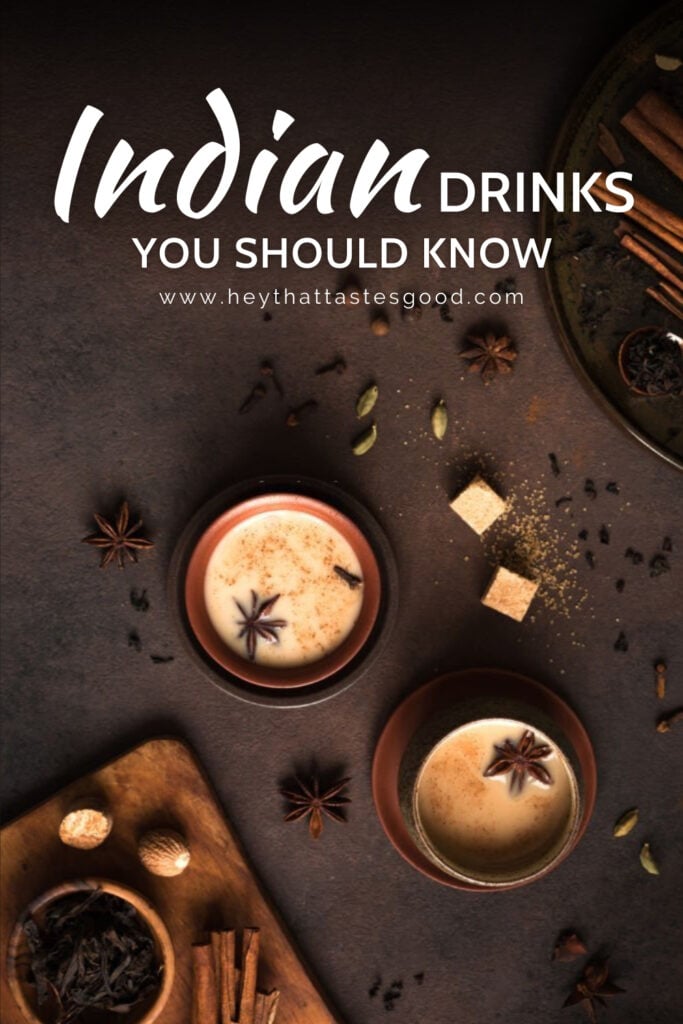


Linda Dean
Expertise
Culinary Arts, Food Journalism, Global Cuisine, Exploration, Recipe Development, Cultural Food Studies, Culinary Travel and Storytelling
Education
Culinary Institute of America, Hyde Park, NY
Program: Associate in Culinary Arts
Focus: Developed a comprehensive understanding of global cuisines and essential cooking techniques. Engaged in intensive hands-on practice in both kitchens and real-world settings, guided by expert chefs. This program emphasized the application of culinary skills in professional environments, preparing students for a variety of roles in the culinary industry.
City, University of London, London, UK
Program: BA Journalism
Focus: Gained expertise in media studies with a strong foundation in reporting, editing, and communicating. While the program focuses broadly on journalism, the skills acquired apply to food journalism, including the ability to analyze and report on food culture and culinary trends effectively.
Linda Dean is an experienced chef and food writer who loves exploring flavors from around the world. Trained at the Culinary Institute of America, Linda has spent over ten years mastering the art of making dishes that truly represent different cultures. She also studied journalism at City, University of London, which helps her write engaging stories about these foods.
On heythattastesgood.com, Linda shares recipes that bring the world’s kitchens to her readers. She focuses on authentic tastes and the stories behind them, making it easy for anyone to try international cuisine at home.